We’re all rockhounds here, no matter our experience level. There are a ton of great stones out there, and if you’re not just collecting what’s in the local area it won’t break the bank to get some of the cooler rocks and minerals out there. I’ve made a list that focuses on stones that are readily available and won’t break the bank in most forms.
So, let’s start digging and I’ll show you fifteen of my favorite rocks and minerals for you to consider for your own collection!
If you decide you want to add any of these specimens to your collection, I’ve found that Etsy is a good place to look. Just make sure to take the time to research the seller before buying.
Cool Rocks and Minerals To Add To Your Collection
1. Labradorite
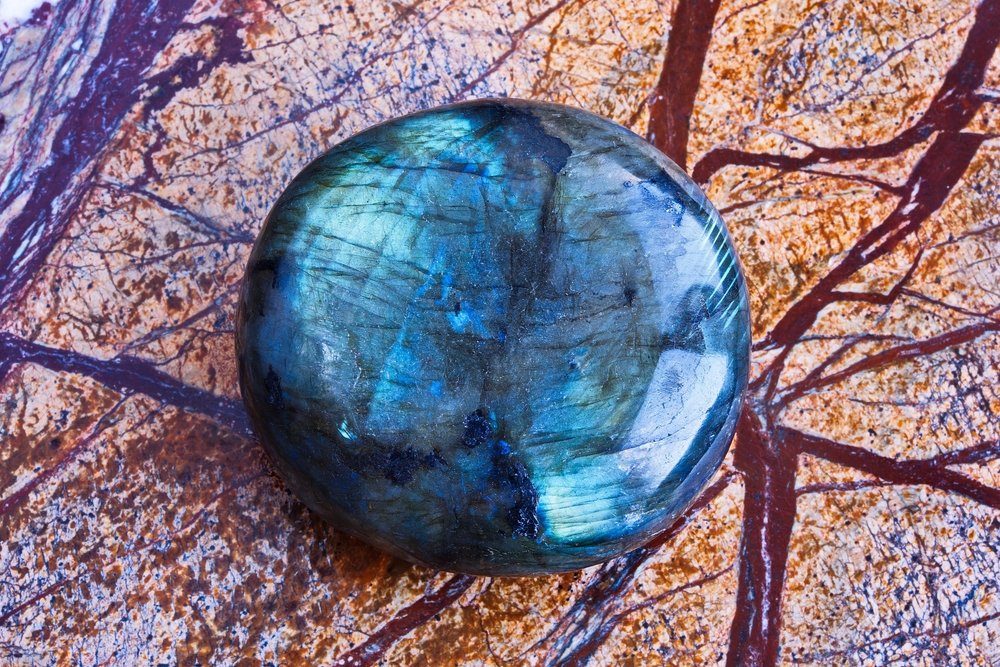
Labradorite is a feldspar variant with an impressive visual effect. When the light hits the stone just right you’ll see a blue, gold, or possibly purple glow that sort of “floats” underneath the surface of the stone. Labradorite has gained popularity in recent years and remains affordable, especially if you’re not looking for the ultra-high-grade variant known as spectrolite.
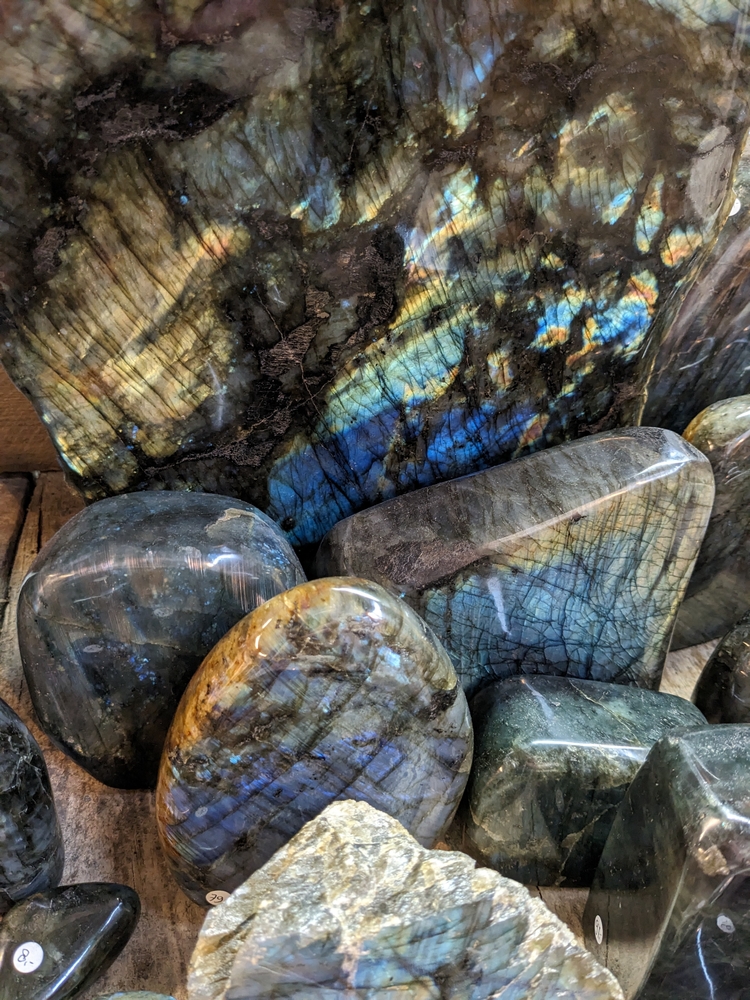
Labradorite gives the most bang for the buck when it comes to optical effects, at least in my opinion. Each piece is unique, showing different coloration and different levels of color. Labradorite is a bit tricky to cut, but when you learn to match the angles it’s easy to create impressive display pieces and cabochons from the material.
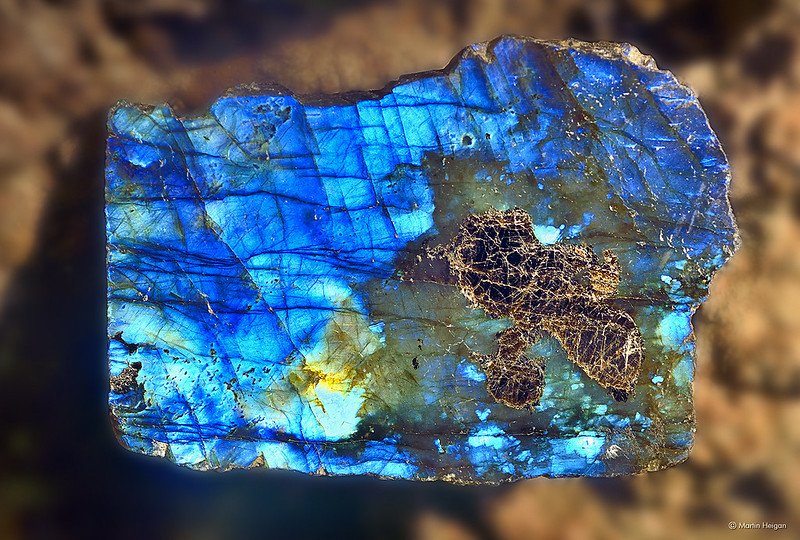
Labradorite is often found in a larger form than many of the stones on this list. This means it’s easy to find decently sized spheres, large slabs, and other bigger forms of labradorite for display in your collection. It’s easily found online in any form, and the price is quite low compared to the impressive visual effect it can add to a collection.
Read More: Ultimate Guide To Labradorite
2. Agates and Jaspers
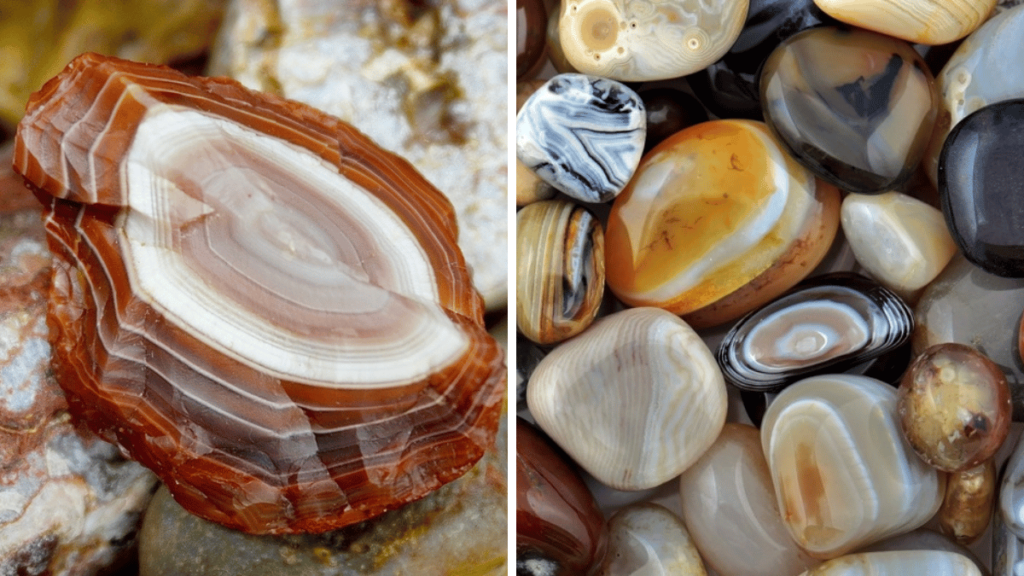
It’s no secret that I’m a huge fan of agates and jaspers. Both are forms of cryptocrystalline silica(or chalcedony), a mixture of the crystals quartz and moganite combined on a microscopic level. At our level, agates and jaspers appear waxy and smooth, and they’re harder than most of the stones you come into contact with. Many people simply collect the nodules, while others use them as the basis for cabochons or carvings.
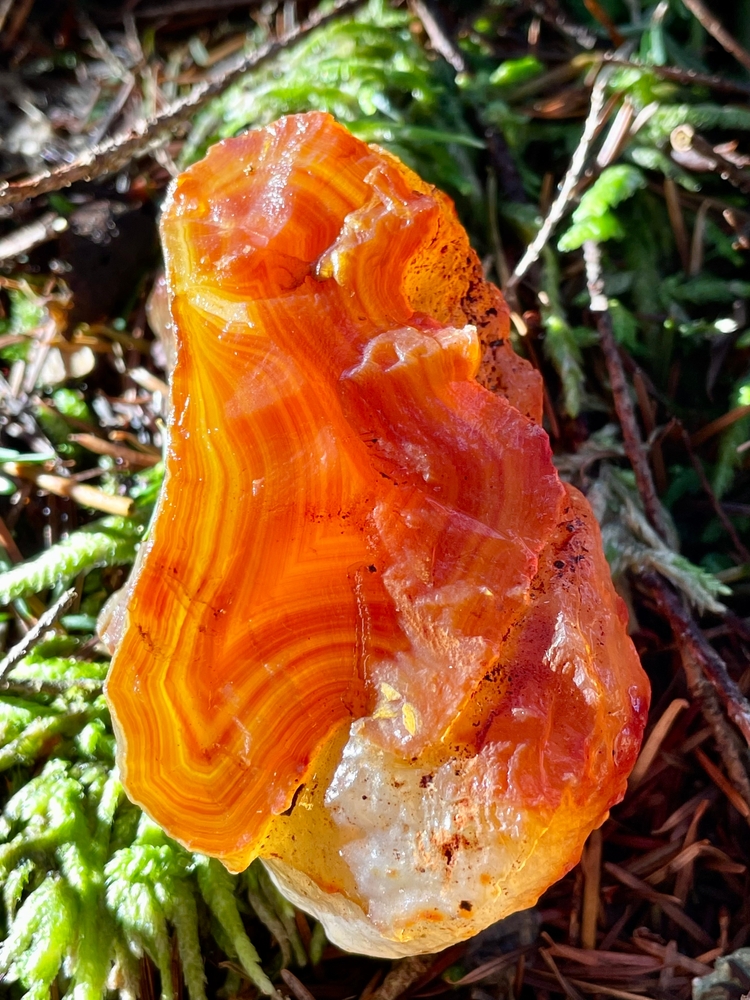
Agate is translucent and often has banding. While traditionally agate only referred to banded stones of this type, it’s also used to reference translucent but included stones like moss agate or dendritic agate. In these types, crystals have grown into the chalcedony and are on full display. Jaspers, on the other hand, are opaque and often found with incredible patterns.
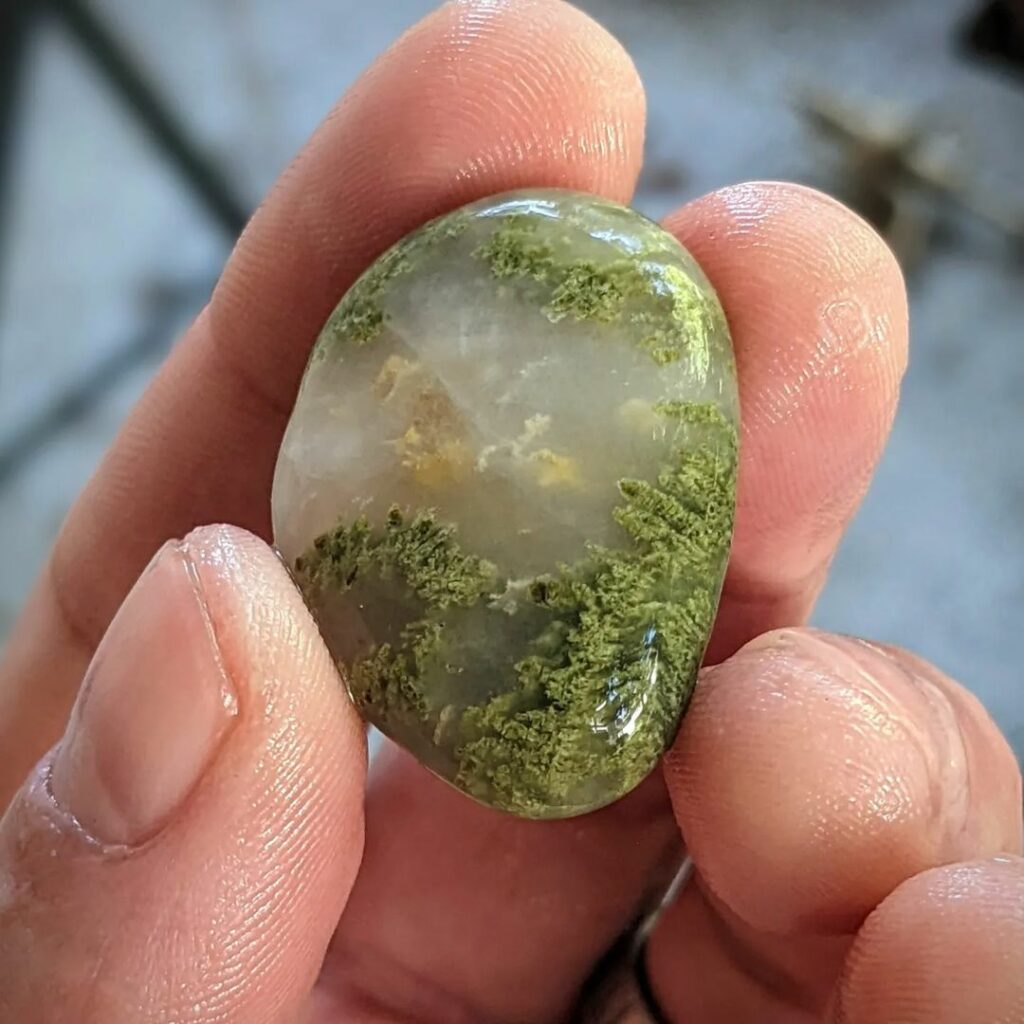
Both of these stones can be found in most places across North America. Even places where they aren’t native to the bedrock will often have a few strewn through their waterways as the result of past erosion. The varieties of each are endless, and best left for the rockhound to explore on its own as they look for a favorite!
3. Quartz Varieties
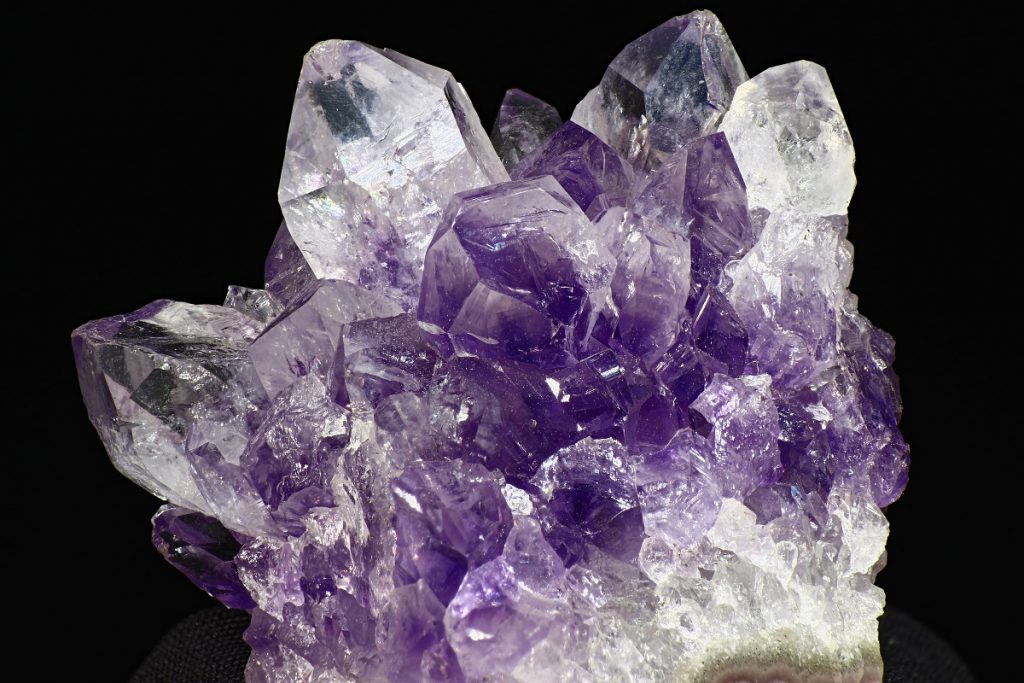
Quartz is the archetype that all crystals seem to come from. The form is recognized by most of us, even people who don’t rockhound! The silica that makes them up forms into a six-sided crystal with a termination resembling a pyramid on one end. There are many forms of quartz, both in form and in color. In form, quartz is generally found in geodes, as clusters, and as individual points contained in pockets in the Earth.
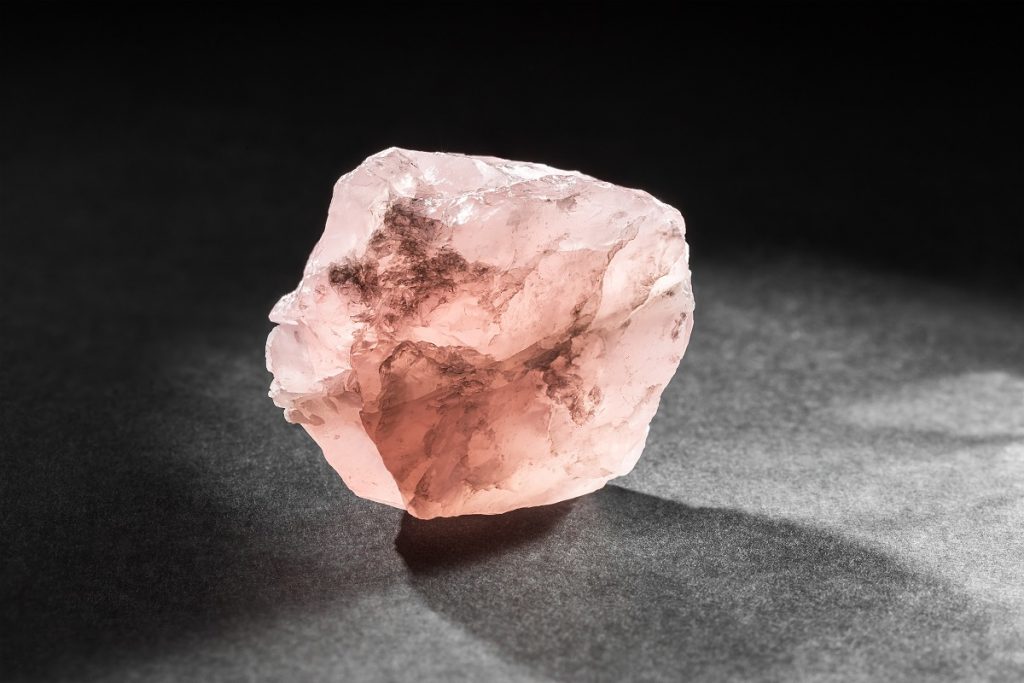
While the majority of quartz is clear, there are many colored varieties as well. Among the most famous are smoky quartz, amethyst, and citrine. These quartz varieties are all colored by iron, making them brown, purple, or yellow respectively. Other variations can have heavy inclusions that give the appearance of color. Strawberry quartz is a good example, having dots of red hematite included through the stone that can give the appearance of red spots or even just a red crystal if dispersed finely enough.
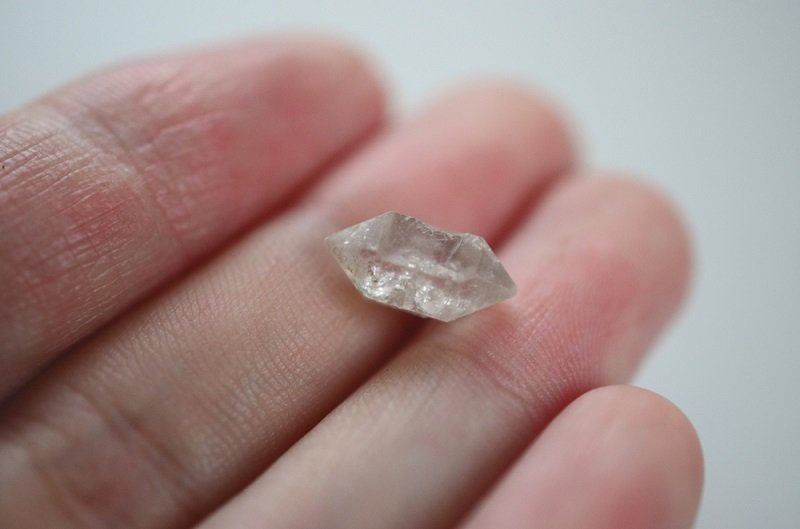
Quartz can also have inclusions that show less color but more minerals. Dumortierite quartz, for example, has fine blue crystals growing in it. Rutilated quartz, on the other hand, often appears to have threads of fine gold woven through the stone, while tourmaline-bearing quartz will have black stripes. Quartz is common, cheap, and has endless variety. The perfect crystal for a new collector.
4. Tiger’s Eye

Tiger’s Eye is another cheap stone that displays an optical effect. For my money, optical effects were what originally drew me to many stones and Tiger’s Eye is no different. Tiger’s Eye is actually a quartz variety, but it’s massive, opaque, and doesn’t really resemble classic quartz so it’s usually considered its own thing.
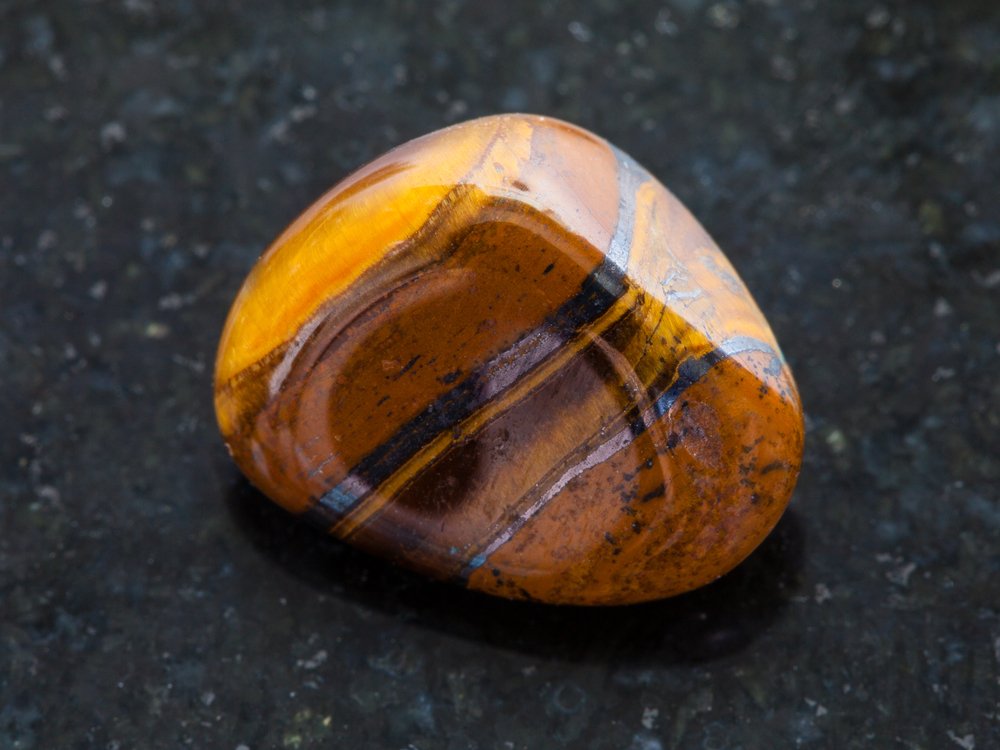
Tiger’s Eye has an effect called chatoyance when cut properly. This shows up as a streak of light that runs along the fibers of the stone. Tiger’s Eye is also found in a blue form, known as Hawk’s Eye, and is rather common. There are also treated stones out there, for instance, Red Tiger’s Eye is subject to heat treatment. Other colors are actually made from fiber optic glass but are sometimes sold as colored Tiger’s Eye by unscrupulous dealers.
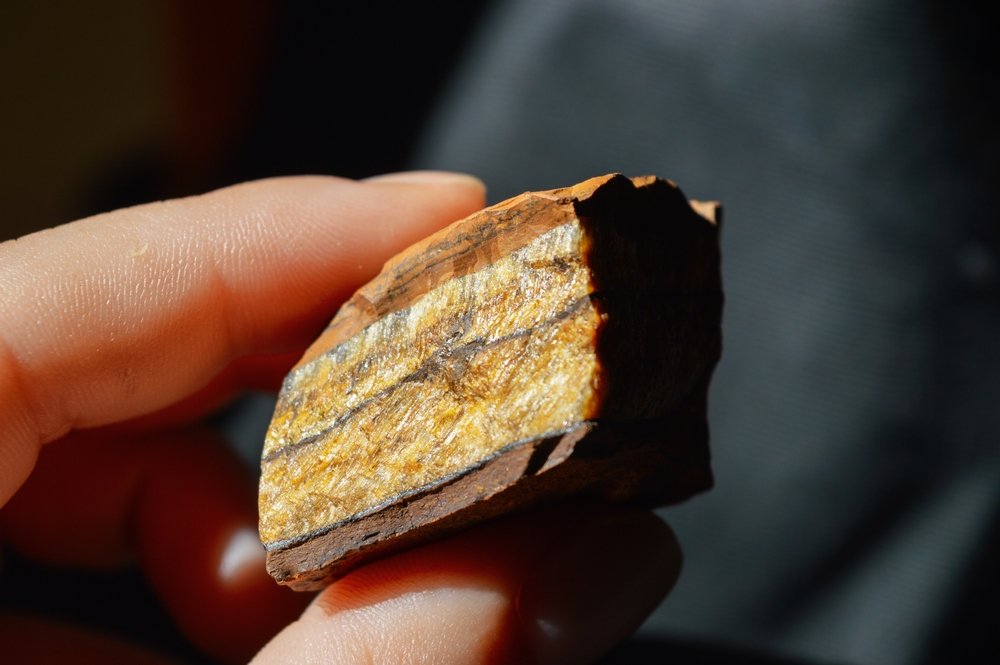
The internal structure of Tiger’s Eye is interesting. The chatoyancy comes from the complex interlocking of quartz crystals and amphibole fibers. The latter have usually been replaced with limonite, an iron ore, in the majority of specimens. Tiger’s Eye is cheap and readily available, at least in it’s normal golden form, and it’s long been a favorite of both casual and serious collectors.
Related: How To Clean and Polish Tiger Eye Stone (Step By Step)
5. Calcite
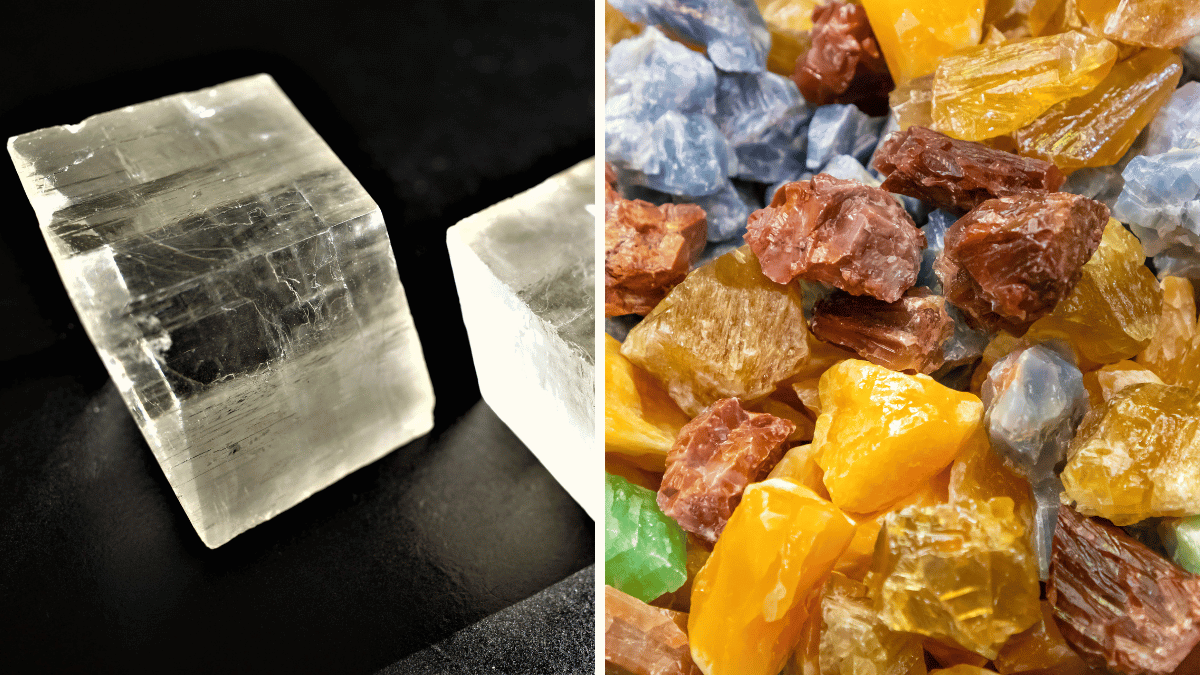
Calcite is an incredibly common mineral comprised of crystallized calcium carbonate. This carbonate is a rather common chemical in minerals, and it also forms into other minerals such as aragonite. Calcite itself is a simple crystal, rather soft, and found in geodes and hollows in many different types of stone. Calcite has two main draws in my eyes: it comes in a wide variety of colors and an array of different forms.
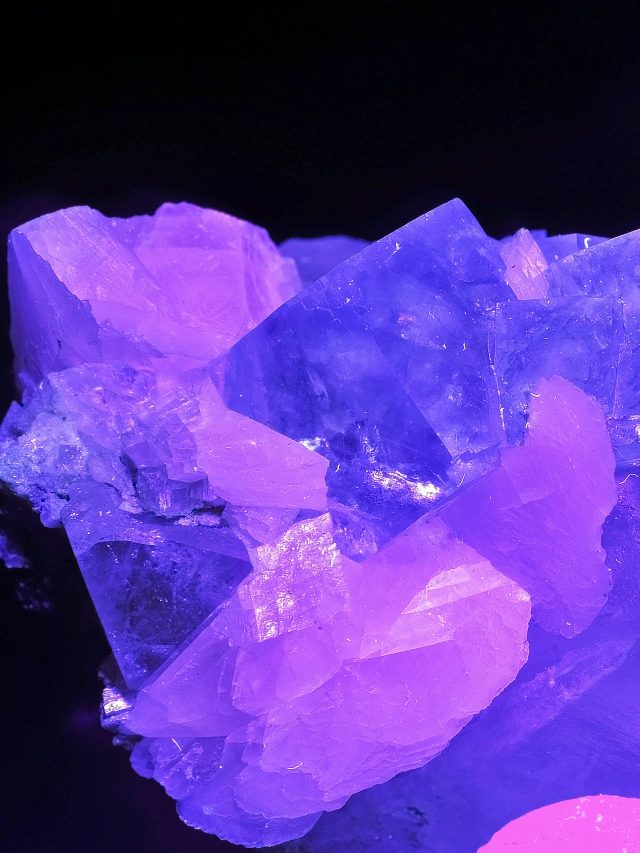
Pure calcite is white, but often the mineral is colored with impurities. The most common are blues and pinks, but you’ll find it in green, red, pink, and even black depending on what the crystal growth trapped during its formation. A clear form of calcite known as Iceland Spar is often used to showcase the interesting effect the crystals have on light.
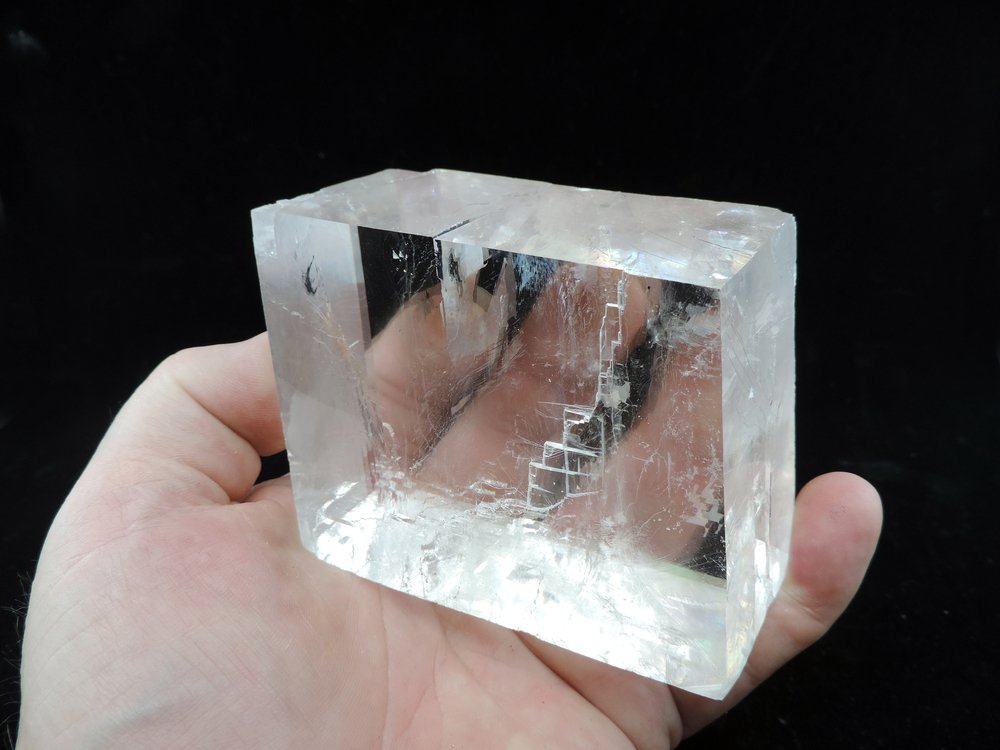
Calcite is usually found as prismatic crystals, but it can also be seen as one of its other forms. How many other forms? Over a thousand. While many of these are barely differentiated on our scale, there are some serious outliers that are great fun to collect. My personal favorite is Dogtooth Spar, which resembles… well, a dog’s teeth. There’s a lot more to this mineral than first meets the eye.
Read More: Calcite: Ultimate Guide To Collecting Caclite
6. Fluorite
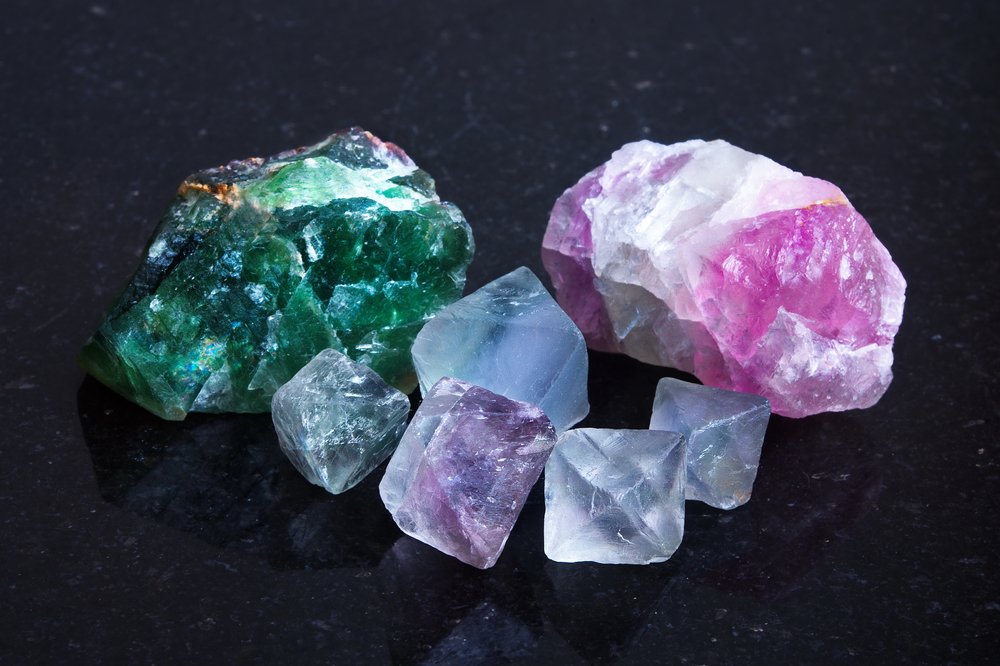
Fluorite is one of the cooler minerals out there, a clear crystal that often forms into large masses. It’s found in many different colors, but the ready availability of Rainbow Fluorite has made it a staple for rock collectors. This variation is cheap, easy to find online, and comes with a shocking variety of greens and purples in bands across the entire stone. It’s far from the only type of fluorite, however!
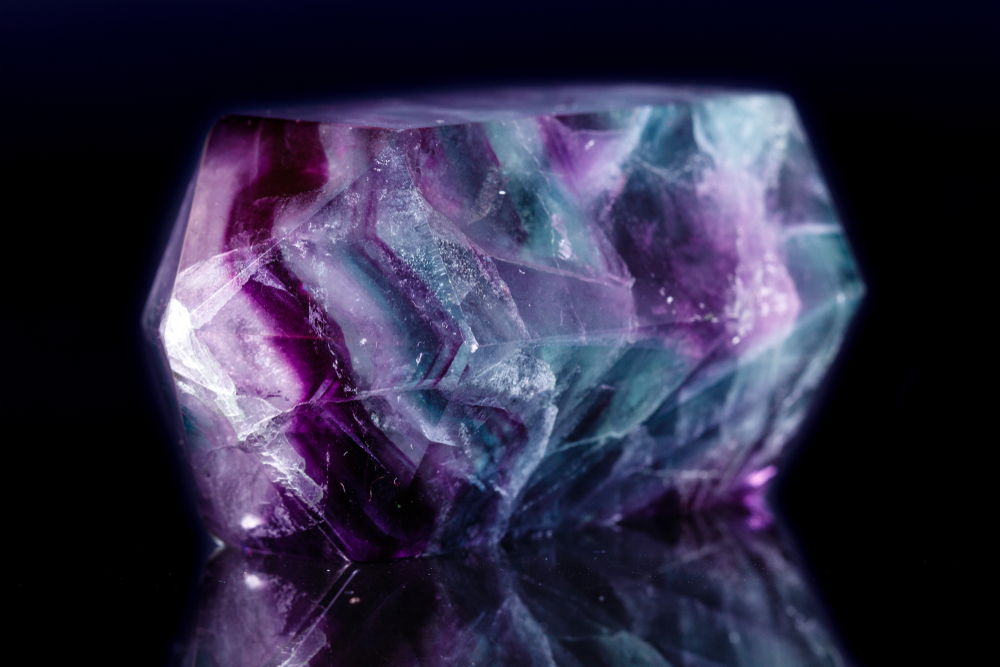
Fluorite is most often seen as clear or off-white crystals. These crystals can have a dazzling array of colors depending on the impurities that were near their point of formation. Reds, greens, blues, and others are all found depending on the area where the fluorite was pulled from the earth. While much of the fluorite found ends up in mineral collections, it’s also a valuable source of fluorine for the chemical industry.
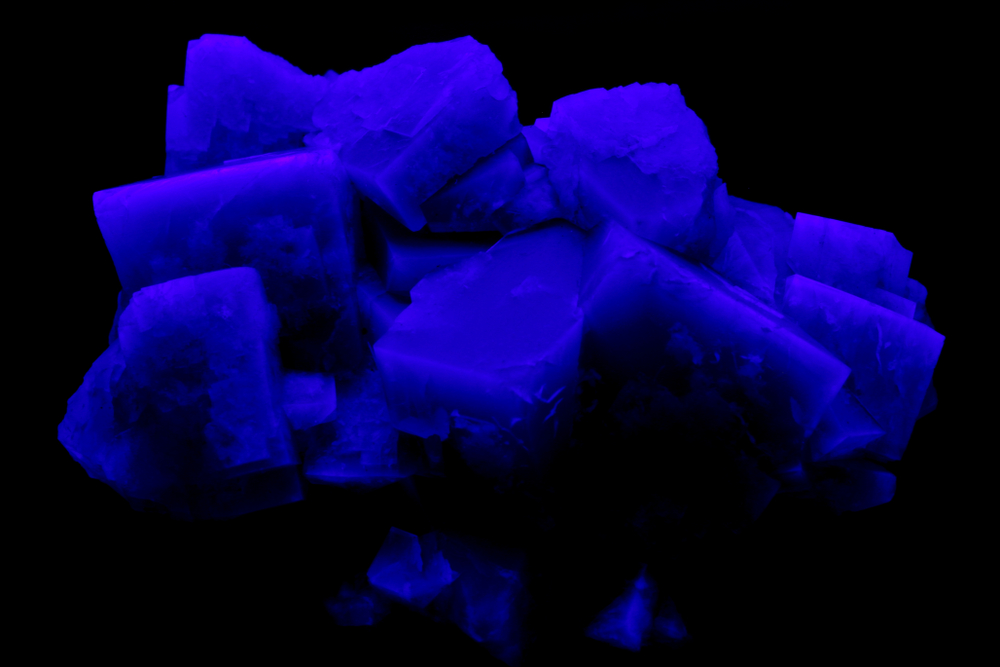
Fluorite can be found in many places, it’s a very common mineral, but different localities will have different forms and colors. Clear fluorite is used extensively in optics as well, its resistant to chemicals and is well suited for specialized lenses made for color correction. These lenses are often made from man-grown fluorite instead of the stuff found in the ground these days. Overall, fluorite is an interesting, varied mineral that deserves a place in most collections.
Read More: Fluorite: Ultimate Guide To Collecting Fluorite
7. Iron Pyrite
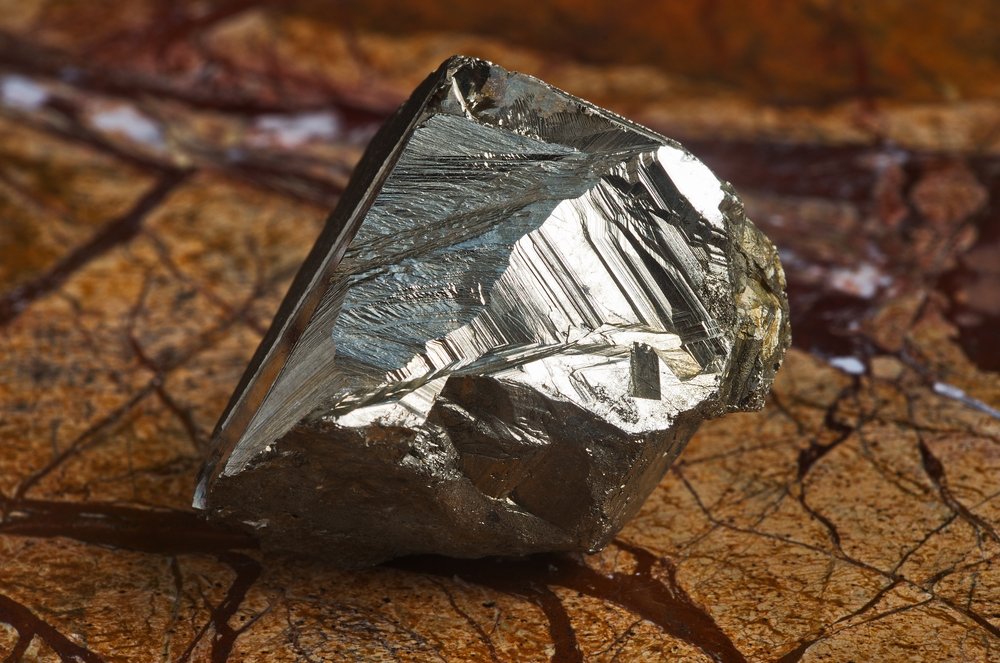
Iron pyrite is also known as Fool’s Gold. It resembles gold superficially, at least in color, and it’s found in many places where there was previous hydrothermal activity. Iron pyrite is comprised of crystallized iron sulfide, forming into cubic crystalline masses with a brassy color. Pyrite is a favorite for collectors, since it’s common, cheap, and has such an interesting structure.
Pyrite is associated with gold in the ground, and it’s often found in the same areas. While larger crystals are easy to distinguish from gold due to their cubic crystal habit, smaller pieces can be spread through a host rock and give the appearance of a smattering of gold. More than one new prospector thought they had struck it rich, only to find that what they possessed was essentially worthless.
The joke’s on… well, everyone. Recently it’s been discovered that iron pyrite often traps gold in its crystals during formation and it can be comprised of up to 0.2% gold by weight, making certain pieces of pyrite richer than the usual ores extracted. While a piece on the shelf won’t contain enough gold to be worth much, iron pyrite is still part of the incredible history of gold prospecting.
8. Malachite
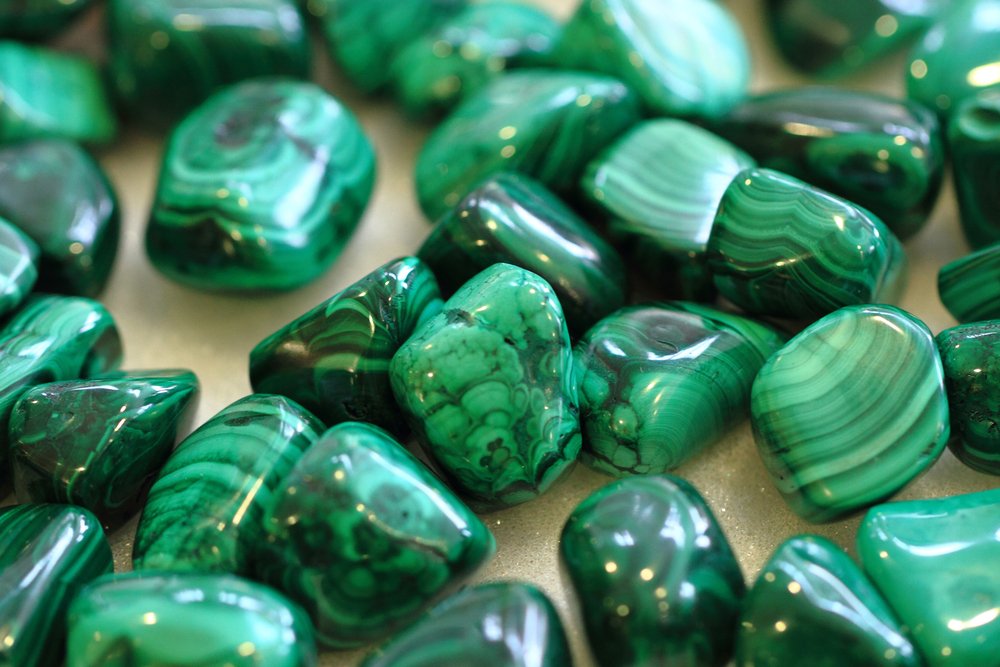
Malachite is a classic stone, one which has been used since humans first found it. It was also an important ore of copper in previous times, although that importance has faded today. Malachite takes the form of a banded green mineral, with lighter and darker bands, and is often found in combination with other copper minerals like azurite.
Malachite comes in a few forms but is most often found as a botryoidal mass. It’s also one of the few minerals that form a druzy, which is a secondary coating that occurs farther down the line in a mineral’s life. In this case, it takes the form of a dusting of malachite crystals that appear silky when viewed. This form is often called Velvet Malachite, and it’s a popular find in mineral shops.
Malachite ranges in price, it’s actually one of the more expensive minerals on this list. While tumbles and smaller pieces are usually cheap, larger specimens and gem-grade cabochons can get quite expensive. Malachite’s beauty is still hard to beat and it’s possible to find a good deal on it if you don’t have a nearby copper mine to dig around in.
9. Hematite
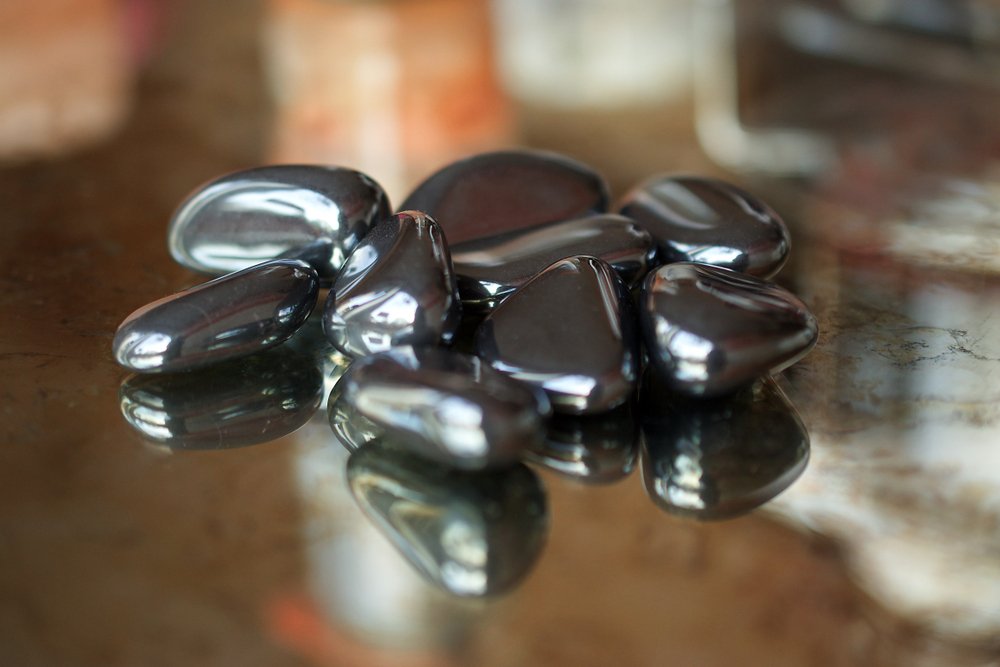
Hematite is an iron ore, but it’s mainly known among rockhounds for possessing a silvery-black sheen that’s hard to imitate. Hematite is commonly formed into beads and other decorative elements used in jewelry, but the right sample can also be breathtaking. Hematite is one of those minerals that leaves an odd streak compared to its color. In this case, the black stone leaves a streak of red when rubbed over unglazed ceramic.
Hematite is usually found as crystals but sometimes shows up in other forms. It’s the coloring agent of many rocks, and can also be found as a rust-red inclusion in clear stones like quartz. My personal favorite form is a striped version that’s called tiger iron or banded iron. Banded iron formations occur in a few places across the planet and have a distinctive pattern of red and black alternating throughout.
Hematite is dirt cheap, especially compared to its beauty. Certain types of formation, such as botryoidal hematite, can get a little bit pricey but in general, it’s very affordable even for a new rockhound. It’s one of the more common stones in the trade, and it’s easy to see why once you’ve viewed a few of its many different forms.
10. Corundum
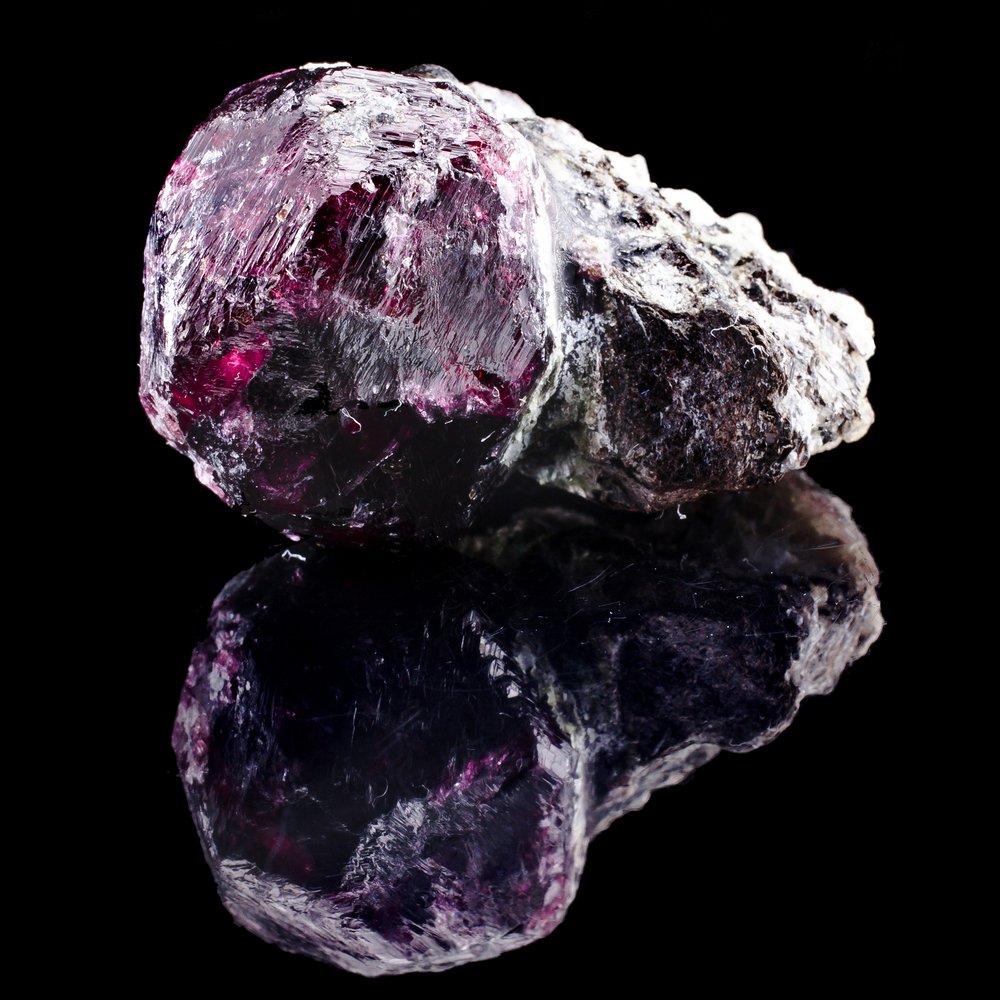
Corundum is the mineral that makes up the precious gemstones we know as ruby and sapphire. It’s an extremely hard, crystalline material that’s second only to diamond in it’s ability to scratch other materials. In general corundum is split into two categories: rubies and sapphire. Rubies are colored red by chromium, while sapphire refers to any other color of corundum.
What many new rockhounds don’t realize is that you can actually find ruby and sapphire cheap in the lower grades. And honestly, these stones can be more visually interesting in their massive form rather than simply as transparent, colored crystals. Ruby, in particular, is easy to find in a variety of forms like spheres and cabochons that remain within a modest price range.
If you’re really into them, there are also synthetic versions around. Synthetic corundum varieties are still corundum, they’re just grown in a lab instead of the ground. They’re grown rather than just manufactured, and it’s a complicated process that ends with a stick of corundum called a boule. The truth is that you can find many varieties of corundum that are quite affordable and beautiful, you just aren’t going to find gem-grade material in a sane price range.
11. Beryl
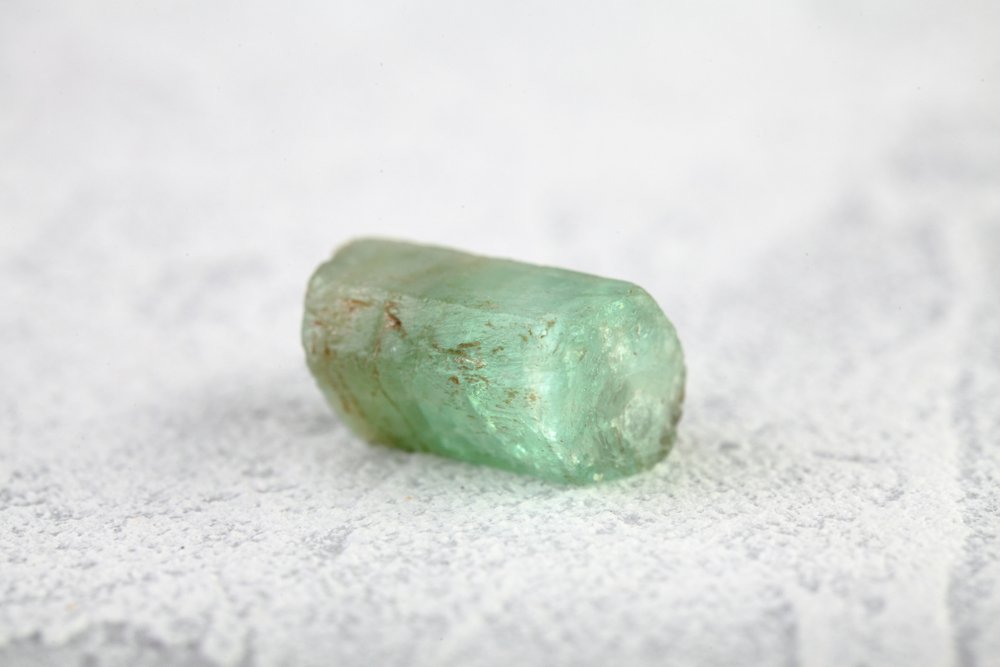
Beryl is the mineral that makes up emerald, morganite, heliodor, and aquamarine. These stones are all cut as precious gems, and emeralds are among the priciest. Beryl is strange in that it’s different colors often have different levels of transparency. While aquamarine is known for its transparency, for instance, emerald has so many inclusions that even world-class emeralds are rarely eye-clean. Indeed, an eye-clean emerald is almost always a synthetic gemstone.
Depending on the form you like, these stones can be quite affordable. Less transparent and massive material can be found, ranging from octagonal wafers of aquamarine to heavily included and cracked emeralds cut as cabochons. There is also a white form that shows up often as larger crystals.
Beryl is the foundation mineral of so many gemstones that its impossible to ignore. Non-gem samples remain affordable, and even gem-quality crystals of some of the forms remain at a moderate price. Of course, it’s also found in many pegmatites across North America so you may be able to dig some yourself!
12. Welo Opal
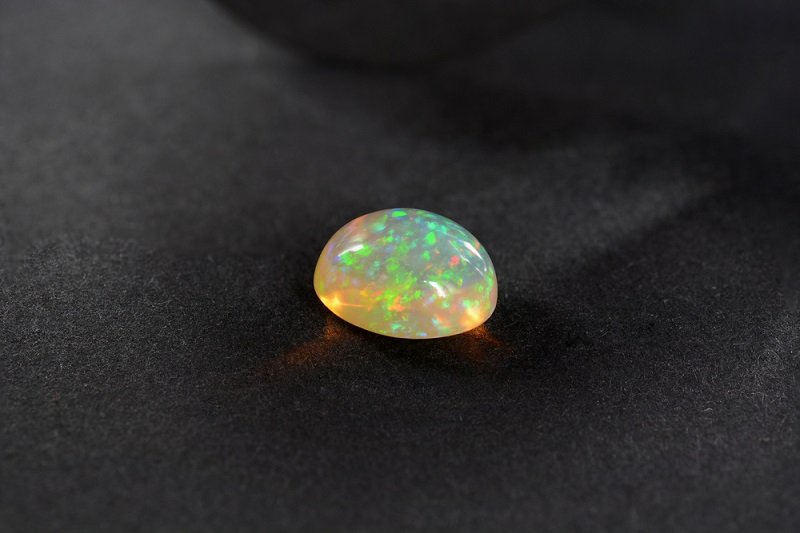
Welo opal is a hydrophane opal that comes from Ethiopia. It’s a different material than the more solid material that most people know as precious opal, that stuff generally comes from Australia and is very expensive. Welo opal, on the other hand, is relatively cheap but it’s a more fragile material.
These opals have high water content and are known for “crazing” as they dry out after cutting. Crazing is the formation of minor cracks along the surface of the stone when it hasn’t been struck or exposed to extreme outside conditions. For a collector, however, they’re a great boon since they can display impressive fire while remaining modestly priced.
A small bag of rough Welo opal won’t cost you much, and with some diamond files and a bit of time, you can remove the matrix. These stones are often displayed in water, which helps to bring out their colors and is a great idea if you’re not planning on cutting them. They’re the most expensive stone on this list, but they’re also a great way to add a true gem to your collection!
- Online rock and mineral club for collectors of all levels!
- Find community with like-minded rock and mineral enthusiasts.
- Monthly Giveaways!
- Free Access to Entire Digital Library of Products (annual memberships)


